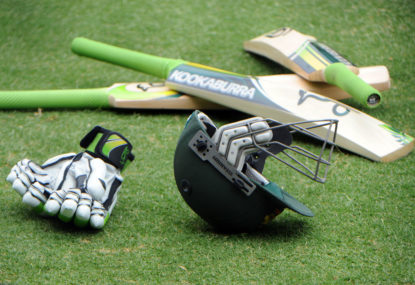Bazball comes first over hit and giggle: Stokes pulls out of T20 World Cup to focus on Tests
England's chances of retaining the Twenty20 World Cup have been hit for six with the news Ben Stokes has opted out of selection for…

For a long time cricketers in England were categorised into amateurs and professionals, and the basis for the categorisation was a demarcation of social status.
The amateurs belonged to the elite class which boasted of lords, lawyers and other eminent position holders of the society whereas the professional cricketers belonged to the working class. The amateurs were mostly based in North London while Nottinghamshire was the hub of professionals.
Given the background, it isn’t a surprise that the amateurs were the law-making authority. They held all the key positions on and off the field. Only an amateur would captain the national team or administer the game in governance roles. Further, the amateurs had the luxury of just having to bat and field in convenient positions. They only ever bowled if they ‘wanted to’.
The professionals were relegated to the more tedious aspects of the game. They had to bowl all day, field in difficult positions, coach and practice fielding and even umpire. The only batting they got to do was ‘if needed’. The next best chance was if the professional was an exceptionally good bat, he would follow after the weakest amateur in the batting order.
The professional cricketer was supposed to address the amateur as ‘Sir’ or ‘Mister’. Rather appallingly the amateurs and professionals would never travel in the same class, share a change room, bedroom or even eat together. In fact they would enter the ground from two different gates!
The worst part of the discrimination was remuneration. The payment for professionals was termed ‘wages’ while for the amateurs it was referred to as ‘expenses’. Being from the working class, the professional cricketers had to play to earn wages. For the amateurs, hailing from the cream of society, expenses earnt from cricket was never the primary source of living – and yet the amateurs got far more than the professionals, who were allotted set rates at a pittance.
The class barrier was prominent through the bodyline series in 1932-33 as well. In fact England captain Douglas Jardine went a step further – every time he entered the field, instead of the MCC cap he wore a colourful harlequin cap. That harlequin cap, obtained from his University, was a symbol of his high standing in the society. However, Jardine’s act was intended more towards reminding the Australians of his stature than to undermine his own professional subordinates.
It took the destruction of World War II to trigger the dismantling of the class wall. The social and financial devastation led to the authorities to give in to the fact that the only way of resurrecting cricket – and through it the coffers – was to perform with committed team spirit on the field. That couldn’t be as easy as it sounded, after all. The deliberations started in 1945 and the abolition of the amateur and professional classifications eventuated in 1962.